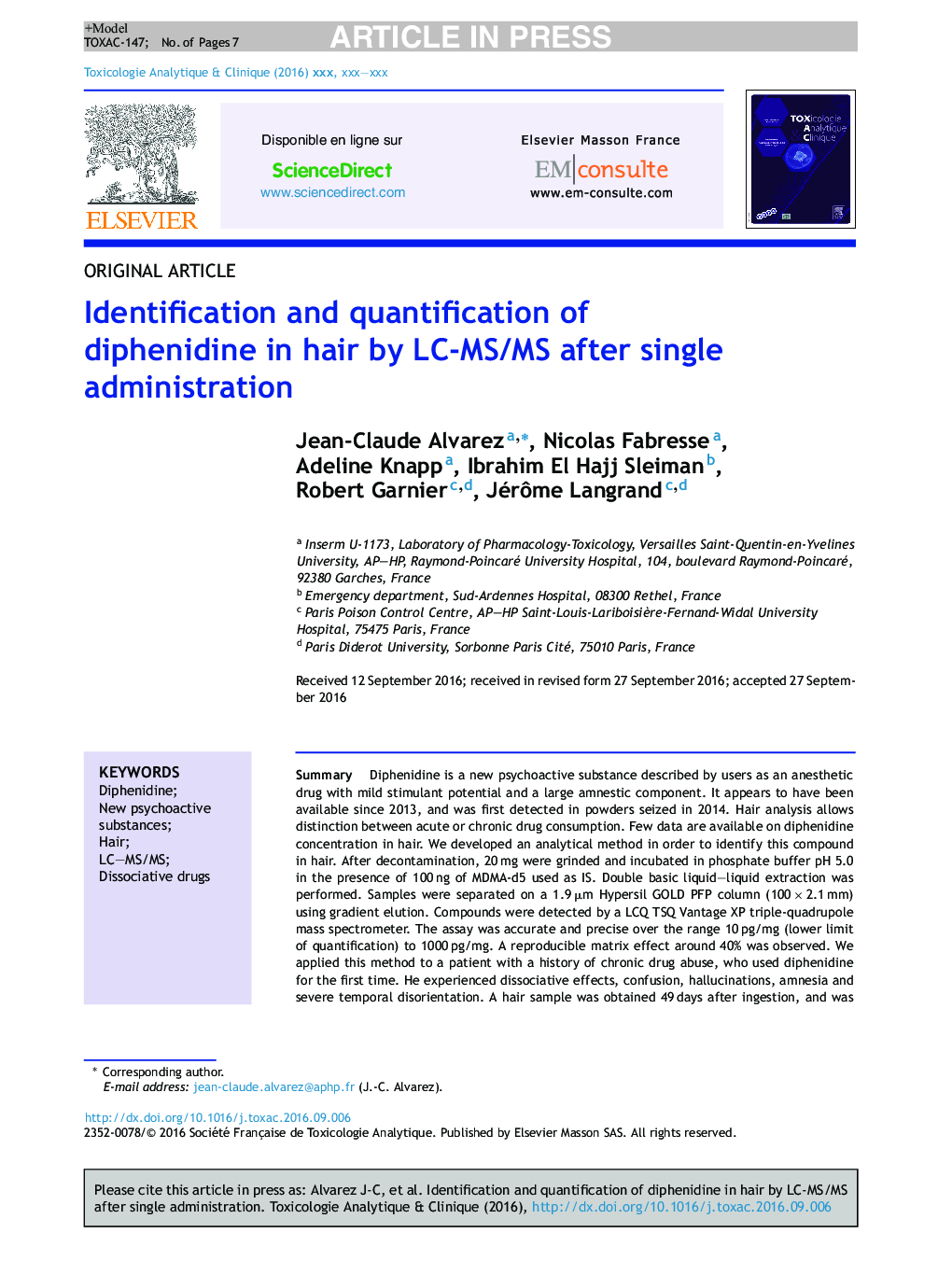| Article ID | Journal | Published Year | Pages | File Type |
|---|---|---|---|---|
| 4761513 | Toxicologie Analytique et Clinique | 2017 | 7 Pages |
Abstract
Diphenidine is a new psychoactive substance described by users as an anesthetic drug with mild stimulant potential and a large amnestic component. It appears to have been available since 2013, and was first detected in powders seized in 2014. Hair analysis allows distinction between acute or chronic drug consumption. Few data are available on diphenidine concentration in hair. We developed an analytical method in order to identify this compound in hair. After decontamination, 20 mg were grinded and incubated in phosphate buffer pH 5.0 in the presence of 100 ng of MDMA-d5 used as IS. Double basic liquid-liquid extraction was performed. Samples were separated on a 1.9 μm Hypersil GOLD PFP column (100 Ã 2.1 mm) using gradient elution. Compounds were detected by a LCQ TSQ Vantage XP triple-quadrupole mass spectrometer. The assay was accurate and precise over the range 10 pg/mg (lower limit of quantification) to 1000 pg/mg. A reproducible matrix effect around 40% was observed. We applied this method to a patient with a history of chronic drug abuse, who used diphenidine for the first time. He experienced dissociative effects, confusion, hallucinations, amnesia and severe temporal disorientation. A hair sample was obtained 49 days after ingestion, and was divided in five 1 cm-segments. Diphenidine was identified on the first three proximal segments, probably due to sliding hair in the strand, at concentrations of 123, 79 and 89 pg/mg. Twenty-three others compounds were also identified in hair, showing the multidrug abuser status of this patient.
Related Topics
Health Sciences
Medicine and Dentistry
Forensic Medicine
Authors
Jean-Claude Alvarez, Nicolas Fabresse, Adeline Knapp, Ibrahim El Hajj Sleiman, Robert Garnier, Jérôme Langrand,
